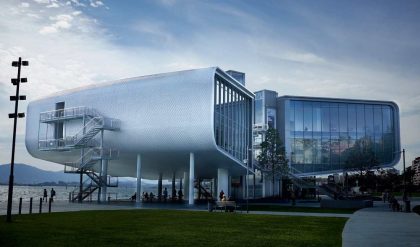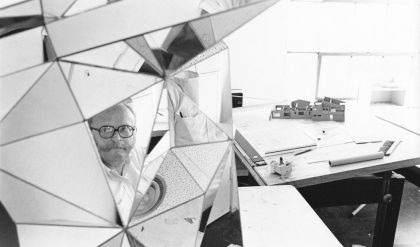Modernism was a philosophical movement of the late 19th and early 20th centuries that was based on an underlying belief in the progress of society.
Modernism is a philosophical movement that, along with cultural trends and changes, arose from enormous transformations in Western society during the late 19th and early 20th centuries. Among the factors that shaped modernism were the development of modern industrial societies and the rapid growth of cities, followed by the horror of World War I.
Modernism was essentially based on a utopian vision of human life and society and a belief in progress, or moving forward. It assumed that certain ultimate universal principles or truths such as those formulated by religion or science could be used to understand or explain reality.
Modernist ideals were far-reaching, pervading art, architecture, literature, religious faith, philosophy, social organization, activities of daily life, and even the sciences. The poet Ezra Pound’s 1934 injunction to “Make it new!” was the touchstone of the movement’s approach towards what it saw as the now obsolete culture of the past. In this spirit, its innovations, like the stream-of-consciousness novel, atonal (or pantonal) and twelve-tone music, divisionist painting and abstract art, all had precursors in the 19th century.
In painting, during the 1920s and the 1930s and the Great Depression, modernism is defined by Surrealism, late Cubism, Bauhaus, De Stijl, Dada, German Expressionism, and Modernist and masterful color painters like Henri Matisse as well as the abstractions of artists like Piet Mondrian and Wassily Kandinsky, which characterized the European art scene. In Germany, Max Beckmann, Otto Dix, George Grosz, and others politicized their paintings, foreshadowing the coming of World War II, while in America, modernism is seen in the form of American Scene painting and the social realism and regionalism movements that contained both political and social commentary dominated the art world.
Modernism is defined in Latin America by painters Joaquín Torres García from Uruguay and Rufino Tamayo from Mexico, while the muralist movement with Diego Rivera, David Siqueiros, José Clemente Orozco, Pedro Nel Gómez, and Santiago Martinez Delgado, and Symbolist paintings by Frida Kahlo, began a renaissance of the arts for the region, characterized by a freer use of color and an emphasis on political messages. The end of modernism and beginning of postmodernism is a hotly contested issue, though many consider it to have ended roughly around 1940.

Post-Impressionism
Post-Impression refers to a genre that rejected the naturalism of Impressionism in favor of using color and form in more expressive manners.
Move from Naturalism
Post-Impression refers to a genre of painting that rejected the naturalism of Impressionism, in favor of using color and form in more expressive manners. The term “Post-Impressionism” was coined by the British artist and art critic Roger Fry in 1910 to describe the development of French art since Manet. Post-Impressionists extended Impressionism while rejecting its limitations. For example, they continued using vivid colors, thick application of paint, distinctive brush strokes, and real-life subject matter, but they were also more inclined to emphasize geometric forms, distort forms for expressive effect, and to use unnatural or arbitrary colors in their compositions.
Significant Artists of Post-Impressionism
Post-Impressionism developed from Impressionism. From the 1880s onward, several artists, including Vincent Van Gogh, Paul Gauguin, Georges Seurat, and Henri de Toulouse-Lautrec, envisioned different precepts for the use of color, pattern, form, and line, deriving these new directions from the Impressionist example. These artists were slightly younger than the Impressionists, and their work contemporaneously became known as Post-Impressionism. Some of the original Impressionist artists also ventured into this new territory. Camille Pissarro briefly painted in a pointillist manner, and even Monet abandoned strict en plein air painting. Paul Cézanne, who participated in the first and third Impressionist exhibitions, developed a highly individual vision emphasizing pictorial structure; he is most often called a post-Impressionist. Although these cases illustrate the difficulty of assigning labels, the work of the original Impressionist painters may, by definition, be categorized as Impressionism.

A Diverse Search for Direction
The Post-Impressionists were dissatisfied with the triviality of subject matter and the loss of structure in Impressionist paintings, although they did not agree on the way forward. Georges Seurat and his followers, for instance, concerned themselves with Pointillism, the systematic use of tiny dots of color. Paul Cézanne set out to restore a sense of order and structure to painting by reducing objects to their basic shapes while retaining the bright fresh colors of Impressionism. Vincent van Gogh used vibrant colors and swirling brush strokes to convey his feelings and his state of mind. Hence, although they were often exhibited together, Post-Impressionist artists were not in agreement concerning a cohesive movement, and younger painters in the early 20th century worked in geographically disparate regions and in various stylistic categories, such as Fauvism and Cubism.





